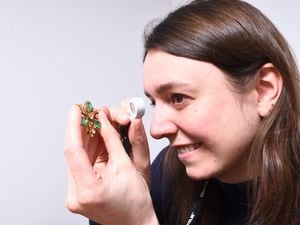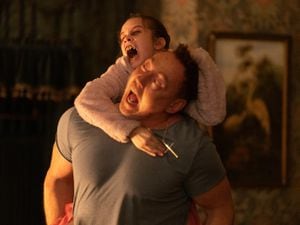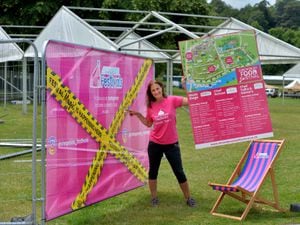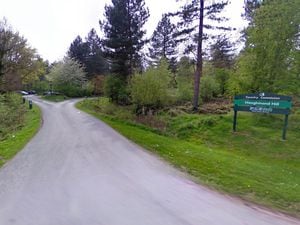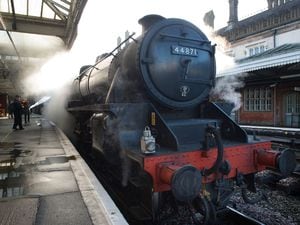Dudley Zoo archives reveal visitor favourites
From the polar bears that delighted both young and old alike to the arrival of the first sealions - Dudley Zoo has been enjoying a trip down memory lane.
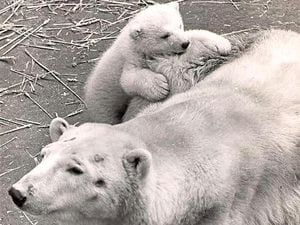
Ahead of its 80th anniversary on May 6, staff have been taking a look through the attraction’s vast archives.
The idea to convert Dudley Castle’s grounds into zoological gardens came from its then owner, the third Earl of Dudley, who chose a team of Modernist architects to design the zoo.
It was built to help visitors get closer to the animals and and among the most popular residents were the polar bears.
The zoo held the planet’s biggest land-based carnivores from opening day until 1989 and they all lived in one of the most iconic Tecton enclosures on site.
Zoo architects adapted an existing ravine to provide a trio of enclosures for polar bears, tigers and lions – with the bears situated in the middle.
The circular pit featured an iceberg shaped diving ramp, which overhung a deep swimming pool, with off-show indoor dens underneath an elevated visitor walkway, which ran around the enclosure.
Frankie and Johnny were the zoo’s first polar bears, who arrived in 1937. They were followed by Harold who joined the site’s animal collection, before being matched with Helga in 1959.
Sadly he died a few years after her arrival and ended up making headlines after he was stuffed by a local taxidermist.
In 1966, Helga was soon joined by Hans and staff heard the patter of tiny feet when the pair welcomed their first cub in 1970.
The youngster was named Chico after Aston Villa footballer Chico Hamilton, who visited the zoo to christen his namesake.
Chico became a star attraction for the zoo and thousands of visitors would flock to see him. To protect the inquisitive cub, archive diaries report how keepers drained the deep pool following his birth to prevent him from drowning and added soft straw to the floor, in case he fell in.
Chico moved to another animal collection in 1972 and Helga and Hans went on to have a further five male cubs.
Following on with the football theme, the second cub, born in 1972 was named Dougan, after Wolves star, Derek Dougan and left the zoo a year later.
Their third cub, born in 1974, died at 14 days old, while Nanook was born in 1975 and relocated in 1977.
A further cub survived just two days in 1978, while their fifth cub, Buster, arrived in 1979 and moved to Belfast Zoo in 1981 where he was renamed Dudley.
Following the deaths of Hans and Helga, in 1983 and 1985 respectively, London Zoo sent their two polar bears, Mosa and Pipaluk, to Dudley.
However, by the mid 1980s the Tecton enclosure had greatly deteriorated and a major repair programme began in 1989.
Mosa and Pipaluk were relocated to Poland and it was decided that polar bears would no longer be kept at Dudley Zoo.
Today the enclosure has been adapted for our elderly Inca, who at 36 years of age, is the oldest Asiatic black bear in Europe and is living out her twilight years at DZG.
Also popular since the zoo opened have been the playful sealions who still attract crowds to watch feeding sessions today.
The first six Californian sealions arrived in 1937 and took up residence in the Tecton concrete pool, which was specially built to conform to the shape of the existing 11th century castle moat.
An excerpt from the zoo’s guide book at the time states: “The sealion pond in a zoo is always a centre of attraction.
“These creatures, so graceful and swift in the water and yet so clumsy on land, provide a spectacle which both young and old enjoy.”
And visitors could see keepers feeding the sealions at 11.30am and 4.30pm each day, where keepers stood on the bridge between the two pools in order to throw fish to the animals on either side. Fast forward to 2017 and four Patagonian sealions remain in the original pool and visitors can still see them being fed during daily talks.
Zoo director Derek Grove, said: “ Old photos are fantastic to spark memories from the past.
“Dudley Zoo is a great place where families build shared experiences and stories of ‘when the elephant ate nan’s best gloves’ or ‘when the monkey showed his bum to dad’.
“But it is also a place that has changed. We would no longer consider housing a killer whale and dolphins in the pools within the castle moat and strict criteria are followed to ensure that we create naturalistic habitats to meet the animals welfare needs.”

